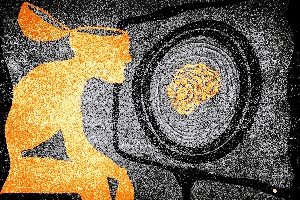Subliminal advertising has been a fear among the general public for a long time, but does it really work? Subliminal is a term taken from Latin meaning “Below threshold”. A subliminal message is designed to pass below our normal limits of perception. In advertising, it is the insertion of hidden messages into media outlets. While not consciously perceived, it’s to appeal to the subconscious mind of the viewer, having some measurable effects on behaviour.
The first reported subliminal advertisement dates back to 1947, spotted on a twirling sign urging viewers to buy war bonds in a Daffy Duck animated short. There was no scientific basis here; it was just a shot in the dark.

Subliminal advertising properly came into the public eye in 1957 when a marketer named James Vicary inserted the words “Eat Popcorn” and “Drink Coca-Cola” into a film. The words appeared for a single frame: long enough for the subconscious to pick up, but too short for the viewer to be aware of it. Vicary claimed this led to a 57.8% increase in popcorn sales and an 18.1% increase in Coke sales. Five years later he admitted to fabricating the results, but not before significant public concern had been produced about the manipulative power of subliminal messages. Shortly after this in 1958, subliminal advertising on our TVs was made illegal in the UK. But more recent experiments have shown that subliminal messages actually can affect behaviour in small ways.
Another famous example of subliminal messages is in the 2000 US presidential campaign, where Republican candidate George W. Bush flashed the word “BUREAUCRATS”, with one frame showing only the latter part of the word “RATS”. The effect this had on the overall presidential contest, however, was unclear.
In a 2006 study by the BBC, participants who had an image of a branded drink (Lipton Ice Tea) flashed to them were more likely to choose that brand to quench their thirst (if they were already thirsty). 2007 saw a study show that subliminal messages may even increase academic performance. Students had hidden words flashed before them, either related to intelligence or completely unrelated, before a practise exam. Those students who saw the intelligence related words performed better on an exam in the following one to four days.
So, with these potential success stories we decided to test the theory. Look out for the results of Emotional Logic’s experiment on subliminal advertising next week.
